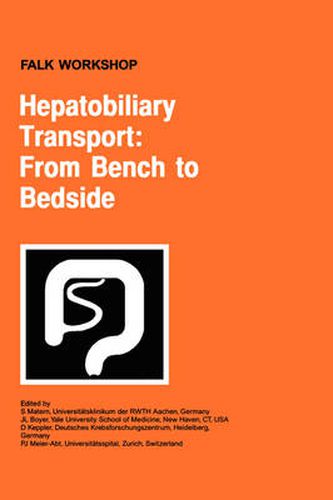Readings Newsletter
Become a Readings Member to make your shopping experience even easier.
Sign in or sign up for free!
You’re not far away from qualifying for FREE standard shipping within Australia
You’ve qualified for FREE standard shipping within Australia
The cart is loading…






This title is printed to order. This book may have been self-published. If so, we cannot guarantee the quality of the content. In the main most books will have gone through the editing process however some may not. We therefore suggest that you be aware of this before ordering this book. If in doubt check either the author or publisher’s details as we are unable to accept any returns unless they are faulty. Please contact us if you have any questions.
There has been significant scientific progress in our understanding of the molecular mechanisms of transport processes in the liver within recent years. Cloning of various members of organic anion and cation transporters has provided the necessary tools to study their regulation under physiological and pathophysiological conditions and has advanced knowledge about bile formation. Mutations of various hepatic organic anion transporters have been identified in humans as hereditary defects leading to the heterogenous syndrome of progressive familial intrahepatic cholestasis (PFIC). Various mouse models, including knockout animals, have provided the opportunity to gain insight into lipid transport by the liver and the genetics of cholesterol gallstone formation. The physiology of bile duct cells and the molecular mechanisms leading to various cholangiopathies have been a main scientific focus in hepatology. Drug targeting to the liver by hepatic organic anion transporters represents an attractive way of selective delivery of pharmaceutical agents in humans. Ursodeoxycholic acid is successfully used in the treatment of patients with chronic cholestatic liver disease and major advances have been made in understanding its mode of action in liver and bile duct cells. This book, the proceedings of the Falk Workshop held in Aachen, Germany, on 25-26 January 2001, contains chapters on all important aspects of biliary transport by well-known experts in this field. It should be a useful resource for those interested in new developments in the field of biliary transport, both in basic science and clinical medicine.
$9.00 standard shipping within Australia
FREE standard shipping within Australia for orders over $100.00
Express & International shipping calculated at checkout
This title is printed to order. This book may have been self-published. If so, we cannot guarantee the quality of the content. In the main most books will have gone through the editing process however some may not. We therefore suggest that you be aware of this before ordering this book. If in doubt check either the author or publisher’s details as we are unable to accept any returns unless they are faulty. Please contact us if you have any questions.
There has been significant scientific progress in our understanding of the molecular mechanisms of transport processes in the liver within recent years. Cloning of various members of organic anion and cation transporters has provided the necessary tools to study their regulation under physiological and pathophysiological conditions and has advanced knowledge about bile formation. Mutations of various hepatic organic anion transporters have been identified in humans as hereditary defects leading to the heterogenous syndrome of progressive familial intrahepatic cholestasis (PFIC). Various mouse models, including knockout animals, have provided the opportunity to gain insight into lipid transport by the liver and the genetics of cholesterol gallstone formation. The physiology of bile duct cells and the molecular mechanisms leading to various cholangiopathies have been a main scientific focus in hepatology. Drug targeting to the liver by hepatic organic anion transporters represents an attractive way of selective delivery of pharmaceutical agents in humans. Ursodeoxycholic acid is successfully used in the treatment of patients with chronic cholestatic liver disease and major advances have been made in understanding its mode of action in liver and bile duct cells. This book, the proceedings of the Falk Workshop held in Aachen, Germany, on 25-26 January 2001, contains chapters on all important aspects of biliary transport by well-known experts in this field. It should be a useful resource for those interested in new developments in the field of biliary transport, both in basic science and clinical medicine.